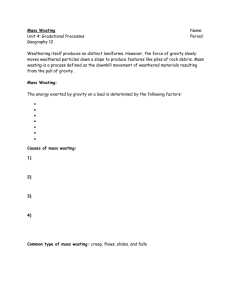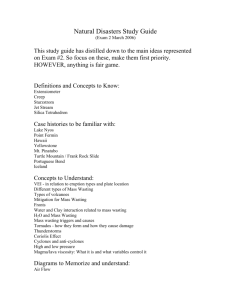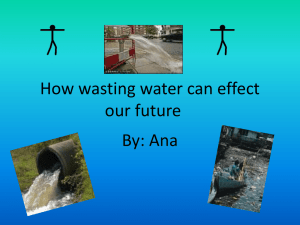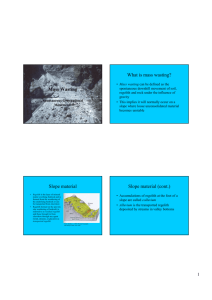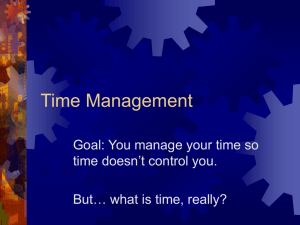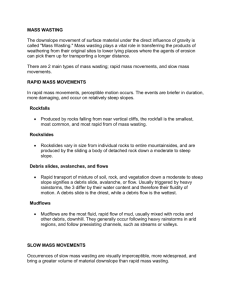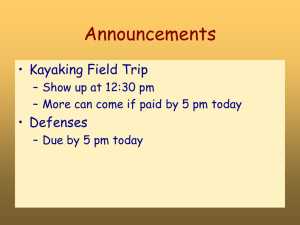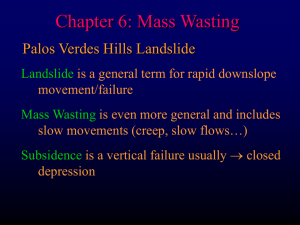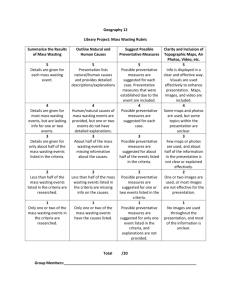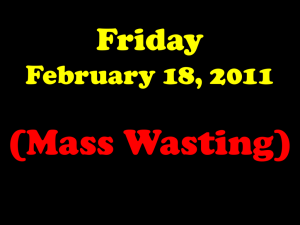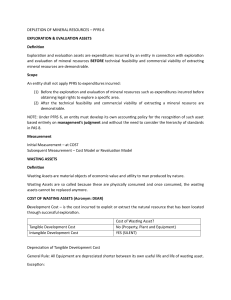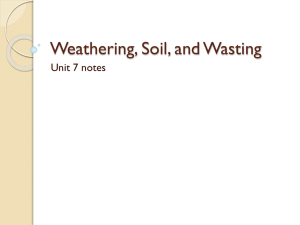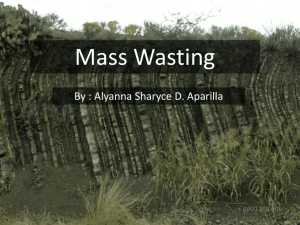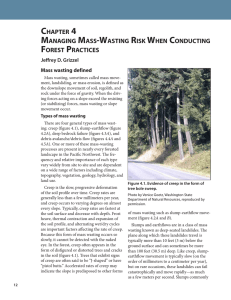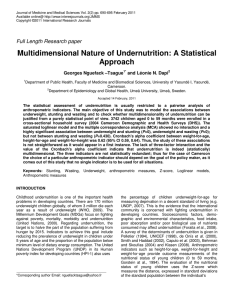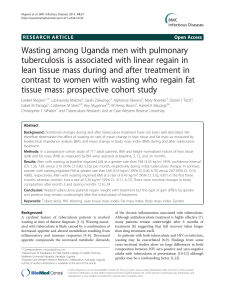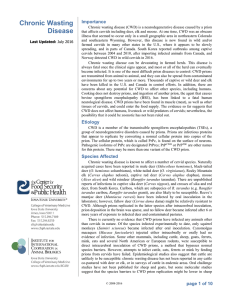GEOL3025, Section 030 Lecture #11 31 August 2007
advertisement
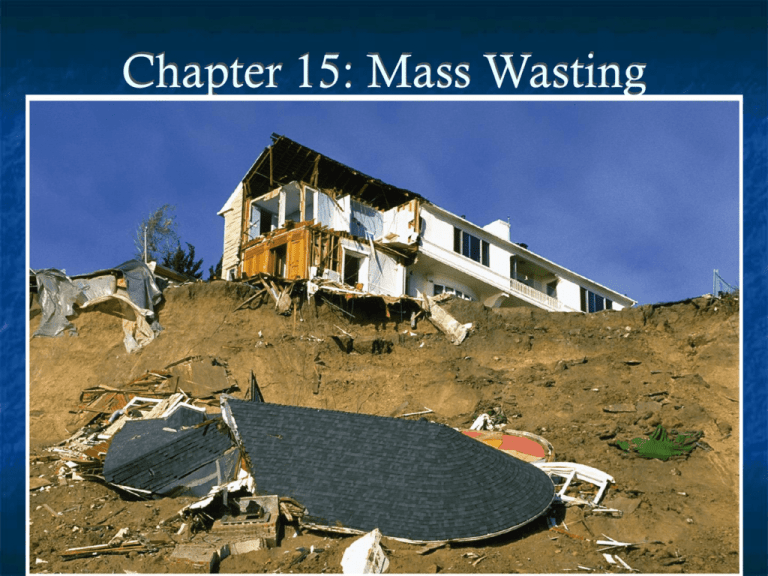
Chapter 15: Mass Wasting Landslide in Peru Yngay & Ranrahirca, Peru 1970 Before After Mass Wasting Definition: Downslope movement of rock, regolith & soil under the direct influence of gravity Does not require transporting medium such as water, wind or glacial ice Importance: Combined with streams to create wide stream valleys Controls & Triggers Water Oversteepened Slopes Removal of vegetation Earthquakes as triggers Frictioncontrolled Frictionreduced Role of Water Central America, Hurricane Mitch, 1998 Removal of Vegetation Earthquakes as Triggers Northridge, CA 1994 Classification of Mass Wasting Type of Materials: Soil & Regolith dominate = debris, mud or earth used in description Bedrock breaks loose = rock in description Type of Motion: Falls: material in freefall Slides: fairly coherent, moves along a surface Flows: moves as viscous fluid Rock Fall Rapid Mass Wasting Slumps e.g. Point Fermin, CA Rockslides 1925, Gros Ventre rockslide Debris Flows Lahar: debris flow composed mostly of volcanic materials Earthflows Slow Mass Wasting Creep Slow Mass Wasting Solifluction Submarine Landslides Can be larger than those on land Most spectacular are those on flanks of submarine volcanoes (AKA seamounts) Major destructive process of Hawaiian islands e.g. Volcanic center of O’ahu now under water to the NE Can cause large tsunamis
